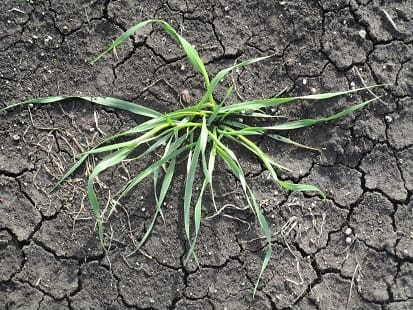WILD oats is one of the most problematic weeds of northern cropping systems and if left uncontrolled has been known to cause wheat yield losses as high as 80 per cent.

Wild oats is one of the most significant weeds in Queensland and New South Wales cropping systems and if left uncontrolled can cause wheat yield losses as high as 80 per cent.
It is estimated the weed impacts around 600,000 hectares across Queensland and NSW and the revenue loss due to wild oats is considered to be about $4.5 million annually.
GRDC crop protection officer north, Vicki Green, said wild oats was one of the most common grass weed species in the northern region and could substantially reduce yields because it was highly competitive, especially when emerging with crops.
“Integrated Weed Management, including the correct use of herbicides and other effective agronomic and non-chemical tactics is crucial for managing wild oats,” she said.
Mrs Green said in NSW and Queensland growers were advised to rotate to summer crops and use winter fallow in paddocks with large wild oat populations.
“Wild oats is highly competitive, producing up to 225 seeds per plant, is easily spread and acts as a host for a number of cereal diseases and pests. It is also at risk of developing resistance to herbicides,” she said.
“Group A herbicide resistance has been present in Australian populations since the mid-1980s. In the past two years Group A resistance in wild oats has exploded in area and frequency.
“So, growers are advised to use mixes of pre- and post-emergent herbicides and change the modes of action each year.”
She also suggests testing for resistance before using Group A herbicides. Wild oats can also be resistant to Group B and Group Z herbicides.
Mrs Green said the wild oats tended to grow in discrete patches at low to moderate densities, but up to 100 plants/m2 are possible.
When it comes to identifying wild oats seedling leaves twist anticlockwise, the opposite direction to wheat and barley. Wild oats leaves tend to be hairy with a slight bluish hue and the emerging leaf is rolled.
“The main flush of germination occurs in autumn and early winter so we do recommend growers and agronomists monitor and management for wild oats during these cooler months. But ongoing vigilance is critical to get this invasive and damaging grass weed under control.”
Source: GRDC
Grain growers in Queensland and New South Wales can now access the latest tips and tactics for controlling the common and economically damaging weed wild oats.
In response to grower and agronomist requests for up-to-date information about wild oats monitoring and management the Grains Research and Development Corporation (GRDC) has this month released a Wild Oats Tips and Tactics factsheet https://grdc.com.au/TT-WildOats.
Grain Central: Get our free daily cropping news straight to your inbox – Click here

HAVE YOUR SAY